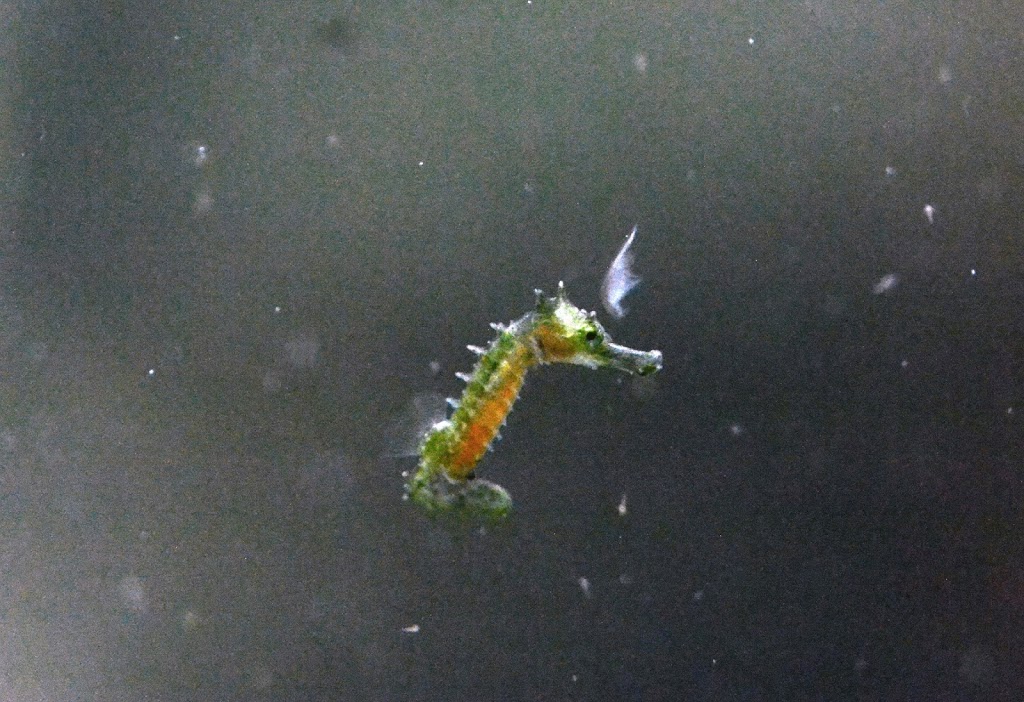Video of “teenage” lined seahorses (H. erectus) feeding
By Virginia Fishes In Virginia FishesOur “baby” seahorses are growing up. Since they were born several months ago, each of these lined seahorses has grown considerably and they have all begun to take on individual characteristics. As seen in this video, they display a wide variety of colors, patterns and even sizes. Lined seahorses use their colors, elaborate patterning and fleshy appendages to hide amid submerged aquatic vegetation (SAV) which were once much more common and wide-spread throughout the Bay. Micro-communities live in and actually on the leaves of aquatic vegetation – called epiphytes – that support and house a surprising number of small organisms, especially amphipods, and a variety other small invertebrates upon which seahorses feed.
In captivity they are fed enriched P.E. Mysis, live Artemia and Cyclop-Eeze throughout the day.
During the next stage of development these adorable little fishes will begin to mature sexually and we can then finally tell how many males and females were born. Seahorses are sexually dimorphic – males and females are physically different externally – and the male can be discerned by a large leathery brood pouch on the front of his torso. These animals are part of the Line Seahorse SSP (Species Survival Plan). The VLM and many other zoos and aquariums across the country within the AZA community captive breed and exchange lined seahorses to ensure they are genetically diverse and that there will be no need to capture any wild lined seahorses for display. Look for some of the larger juveniles to finally go on public display with the four adults (pictured below) already on display in our seahorse exhibit in the Chesapeake Bay gallery.









No Comment
Sorry, the comment form is closed at this time.